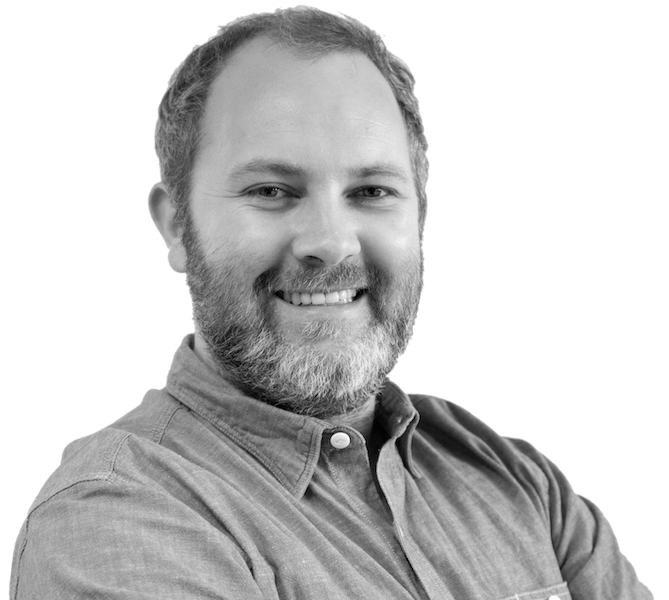
To Find Growth, Look to Your Blind Spots
Category-redefining strategy succeeds or fails based on what you didn’t know you didn’t know.
When we got the call, the client’s board had just finalized a new growth strategy. The objective? Get this century-old market leader, and its market share, back on a growth trajectory.
The goal was audacious. Compress twenty-five years of growth into five, and 5X revenue with substantial investments in digital transformation, new market development and M&A.
But as the C-suite turned to putting the strategy into action, concerns started to emerge. The goal was new. But the path to get there wasn’t.
Many leaders and staff were fine with the status quo. There was no new vision (beyond “grow”) to reinvigorate them. The core offering was becoming commoditized. There was no clear path to differentiating it: a problem for retaining share, never mind increasing it. Evolving needs and emerging competition were remaking the marketplace. But what future to be ready for? It wasn’t clear.
In other words, there were blind spots. They’d led to a stale strategy. It was a case study in what I call ‘faster horse thinking’. As Henry Ford is said to have said, “if I’d asked them what they wanted, they would have told me a faster horse.” The same thing. Just more of it.
To avoid wasted investment and failed execution, our client needed to figure out what it would truly take to win and grow, far into the future. They needed to discover what they could offer the world that would be different. Exciting. More than just a faster horse.
They did it by focusing on their blind spots.
Blind Spots: Stale Strategy’s Cause and Cure
Mature organizations looking for outsized growth often struggle with stale strategy. Not only do they have a lot of blind spots, but they also have a lot of incentives not to look too closely at them. For most of them, doing the same thing but more of it has been successful for decades. Common causes of stale strategy we see include:
-
picking the wrong future direction by looking inward rather than outward for answers
-
being unable to overcome decades of assumptions about ‘the customer’ and their needs; or,
-
finding yourself just plain out of touch with the emerging market landscape.
To revitalize their stale strategy, our client needed to illuminate those blind spots. They needed to start seeing how what matters today and will matter tomorrow had changed.
What’s Blocking the View? What You Already Know
The first step towards seeing what’s in your blind spot is getting rid of what’s blocking the view. Most likely, it’s your organization’s deep expertise about your customer.
In developing their initial strategy, our client had followed a common instinct. Asking the sales and operations teams about what customers want. It’s true, your front-line staff are likely the world’s greatest experts on your customers. But this expertise is by necessity more tactical than strategic. What are people asking us for that we can’t do? Where does the process break down? What improvements can be made? What works well that we can double-down on? It’s all about a faster horse. Rather than looking in blind spots, this is more like following the spotlight.
Their second instinct was to turn to market research. In the right context and with the right methods, this can be a goldmine. But in a mature organization, market research also tends to focus on what’s already known. The most popular research methods are surveys and focus groups. These are designed by coming up with a list of questions you want answers to in advance of collecting the data. What makes people choose us vs. the competition? What pain points and hero moments are driving our net promoter score? What do we change about this new messaging or product to optimize conversion?
Even when they ask open-ended questions like “what would you want from us if you could have anything?” they lead straight to the land of what is already known. They can’t help you find or understand a blind spot. Because people can’t answer them in any insightful or accurate way. All they can imagine is a faster horse.
If you want more than a faster horse, you need better than faster horse data.
Anthropological Research Expands the Aperture
To discover what was in their blind spots, our client needed to set aside their own questions. Then they could create space for people to reveal what mattered most to them, instead of what the business assumed was important.
The first step was taking a bigger perspective on what they were trying to understand. As is almost always the case, our client was thinking about customers, not people. They saw those they served only in terms of the business and its offering. They were blind to the broader context of people’s daily lives and experiences, in which our client was one part among many.
In this case, the core offering was a membership that provided emergency assistance, advice and discounted insurance for vehicles, homes, and travel.
Our anthropologists translated this into aspects of the human, rather than customer, experience. Unexpected events. Adventure and capability. Assistance and security. Membership and belonging.
Now we could understand the broader context of people’s lived experience that the offering was a part of. This would allow us to discover the strategic insights hidden in our client’s blind spots.
Authentic Interactions Reveal What Matters Most
We then talked to people about these thematic areas. We involved them in inclusive design activities, like working together to recreate and respond to an unexpected event.
This gave us an understanding of how they experienced these aspects of life. It revealed what mattered most to them—highlighting places where our client could play a significant role. It surfaced previously unrecognized and unarticulated needs that had gone unacknowledged and unfulfilled.
It also increased the accuracy of the data. When people are carried away in authentic interactions, they’re less likely to tell you what they think you want to hear. Or confuse a faster horse with what they really need.
So if you’re a retailer, a grocer say, don’t just ask people what products and experiences they want. Listen to them tell you about how food, shopping and eating show up in their lives. Then you will clearly see what products and experiences would matter most.
If you sell mortgages or insurance or investments, listen to peoples’ stories about their wealth or wellbeing or home. Then you will see what advice they need, and how to win their trust. If trust and advice are even what they care about most (hint: they aren’t).
This doesn’t only apply to customers, either. The people you need to understand better might be the talent or the investors you want buying into your firm. Or the leaders and staff you want buying into change. Or your partners in your value chain. The same principles apply.
What’s in the Blind Spot? Fundamental New Value
Our client was now able to see what role their offering played in people’s lives, and what made it significant. And they were able to understand what else was valuable within that broader context.
For instance, they had always believed people wanted faster assistance in an emergency. Sure, but what people really wanted was the know-how to avoid problems in the first place, and the confidence to fix them themselves. The business had always devoted substantial resources to ensuring people would save more from a membership than it cost. But we learned that the communities people valued most were those where they gave as much or more as they took.
Our client’s blind spots had led them to a stale strategy based on little more than a faster horse. Illuminating them revealed fundamental new value that would allow true differentiation and growth.
The C-suite was now equipped with the ingredients for revitalizing their strategy. Next we developed a reinvigorated strategic vision that mobilized the organization for change. And growth platforms, based on a unique right to win, that would capture attention and share in the marketplace.
But that’s a story for another time.
–
Reigniting growth in a mature organization takes more than a faster horse. The true opportunities for renewal and growth are hidden in your blind spots. Ready to take a closer look? Get in touch if you’d like to connect.



